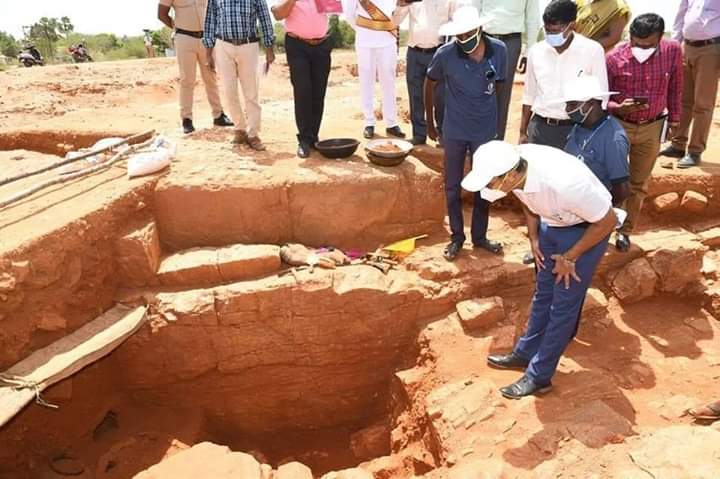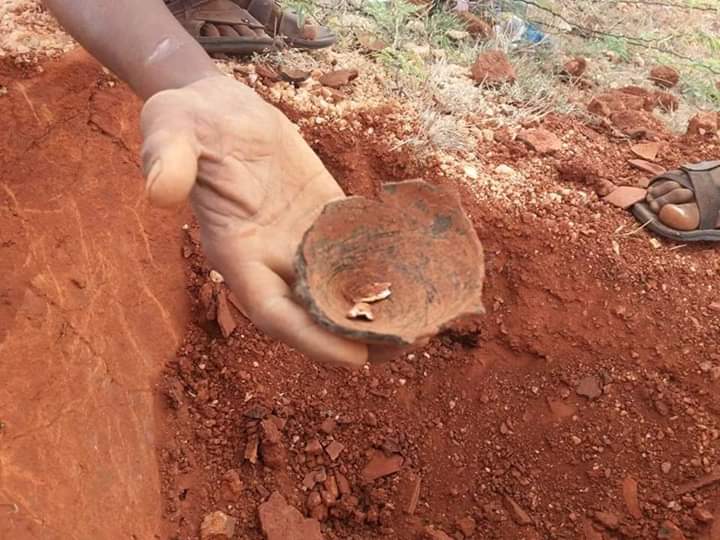
Keeladi: What makes Tamil Nadu keep digging deeper
Although Tamil Nadu has had quite a few excavations over many years, only a few like Arikamedu and Keeladi come to mind immediately.

History has always fascinated humans. And every place in this world has some history behind it. It helps the present generation understand how man lived in a different age, what they did, how they interacted, what kind of life they led and how they set up townships or cities. For the modern human, it has become all the more important to find linkages with his/her ancestors.
Tamil Nadu is no different. In politically charged times like ours, the recent Keeladi excavations in Sivagangai district created a buzz like no other, especially over the period of the Sangam Age’s existence, besides its purported connections to the Indus Valley Civilisation.
While experts would like facts to remain untouched, historians and archaeologists seem to have a larger task at hand to dig out the shreds of evidence left by the ancients and preserved by time.
A history of unearthing
Although Tamil Nadu has had quite a few excavations, only a few like Arikamedu and Keeladi come to mind immediately.
“Even before Keeladi, we have brought out major discoveries through excavations in Uraiyur in Trichy district. But Keeladi has got so much attention because of the media,” says Dr S Rajavelu, Head of Maritime History and Marine archaeology department, Tamil University.
The earliest excavation in the state was done in 1863, when geologist Robert Bruce Foote, who is regarded as ‘Father of Indian Prehistory’, discovered a Paleolithic stone tool, a hand axe at Pallavaram, in then Madras Presidency. Later in 1884, he went on to discover Belum Caves in Andhra Pradesh, the second largest cave in the country.
The next major excavation was carried out in 1876 under German ethnologist Dr Andreas Fedor Jagor, who led a team at Adichanallur in Tuticorin district in unearthing a number of earthen pots, iron weapons and bones and skulls.
According to Alexander Rea, who was then the superintendent of Southern Circle, Archeological Survey of India (ASI), Dr Jagor took all the excavated items to Germany and set up a museum, which is now known as Ethnology Museum in Berlin.
Between 1899 and 1905, Rea himself conducted excavations and found materials similar to what Jagor found and documented these artefacts.

Since 1863 till 2019, 134 excavations have been carried out by various agencies like ASI (71), Tamil Nadu state department of archaeology (33), University of Madras (17), Tamil University (6), Sri Chandrasekharendra Viswa Mahavidyalaya (4), Pondicherry University (1), Sharma Centre for Heritage Education (1) and University of Kerala (1), according to a paper titled Excavations in Tamil Nadu published by researchers of Alagappa University, Karaikudi.
These excavations reveal human inhabitation during Paleolithic, Mesolithic, Neolithic, Chalcolithic and Iron ages.
After the first excavation by Foote in Pallavaram, which is now a bustling town in Chennai, researchers found Gudiyam caves in Poondi, Chennai, in 1963, which showed Paleolithic humans lived in this cave.
Excavations in Attirampakkam on the outskirts of Chennai, Vadamadurai in Dindigul district, Mayiladumparai in Theni district revealed details about how ancient man handled their dead with the use of urns, dolmenoid cists, etc.
Excavations in Adichanallur revealed that our ancestors once worshipped a mother goddess.
Sangam connection
Tamil Nadu’s obsession with the golden Sangam age got a boost when excavations in Arikamedu in Pondicherry by the British archaeologist Mortimer Wheeler and in Alagankulam in Ramanathapuram district, led to the discovery of Roman pottery, suggesting that the Romans had trade relations with the people then.

Excavations in Korkai in Tuticorin, Karur and Poompuhar in Mayiladuthurai districts showed that the people who lived there had buildings made of baked bricks.
These excavations also shed light on the food habits of the people, suggesting that they took both vegetarian and non-vegetarian items. The use of coins and the practice of Buddhism also came to light with these discoveries in Kanchipuram district.
Erode district, which is now a hub for textiles, has also found mentions in Sangam text Pathitruppathu as Kodumanam (now Kodumanal), a village in the district.
New discoveries
Besides these excavations, every other day one can find news items in Tamil media about discoveries of pottery or urns from different parts of the state. People then demand an excavation in those places like Keeladi.
Dr P Jayakumar, head of archaeology and Epigraphy department in Tamil University, says this has become a trend now.
“All these images going viral on social media and in conventional media about finding an urn or pottery has become a trend now. They should be approached with caution,” he says.
“One can get urns anywhere in the state. But taking just urns we cannot excavate everywhere. All this is unnecessary. Excavation should be done in a place where it is undisturbed by humans. That’s how Keeladi excavations have become successful because it is in a coconut tree farm,” he says.
Rajavelu says there are certain procedures to be followed for excavations.
“One cannot go and excavate just like that. Before excavation, exploration must be done. Exploration is different from excavation. The former can be done by a historian but the latter should be done only by an archeologist. The village survey and literature review are the main components of exploration. Some archeological evidence like dolmenoid costs can be seen even at the surface. Only after getting permissions from state and central governments can an excavation be carried out. The licence of excavation must be renewed every year,” he says.
Villagers who excavate in some places do it without permission from the government. They are not aware of it, says Rajavelu.

Challenges and possibilities
Former ASI archeologist T Satyamoorthy says while there are a lot of opportunities, the archaeology department is challenged by shortage of manpower.
“What we have done (excavated) is not even 1%. There are more than 200 archeological sites in the state. In Greater Chennai Corporation (Chennai city limits) itself we have at least 20 sites. But none of them have been excavated,” says
“We need field archeologists to do excavations. But only some universities in the state offer archaeology courses,” he says, adding that if more universities offer archaeology, they themselves can take up excavations.
Besides, the state archaeology department is said to have had more epigraphists than archeologists, most of who have studied Tamil and not history.
Rajavelu says the situation has changed. The department is now appointing more archeologists.
Youngsters are also showing more interest in choosing archaeology, says Jayakumar.
“Though archaeology was introduced in universities in the 1960s, it was after the 80s that the course got attention. Now, after Keeladi excavations, our department gets at least three calls per day inquiring about the course,” he says.
Rajavelu says the Centre has increased the funding for the archaeology department and it is the state’s responsibility to utilise these properly.

